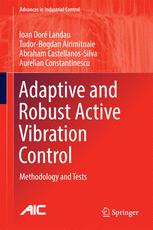

Most ebook files are in PDF format, so you can easily read them using various software such as Foxit Reader or directly on the Google Chrome browser.
Some ebook files are released by publishers in other formats such as .awz, .mobi, .epub, .fb2, etc. You may need to install specific software to read these formats on mobile/PC, such as Calibre.
Please read the tutorial at this link: https://ebookbell.com/faq
We offer FREE conversion to the popular formats you request; however, this may take some time. Therefore, right after payment, please email us, and we will try to provide the service as quickly as possible.
For some exceptional file formats or broken links (if any), please refrain from opening any disputes. Instead, email us first, and we will try to assist within a maximum of 6 hours.
EbookBell Team

4.3
48 reviewsThis book approaches the design of active vibration control systems from the perspective of today’s ideas of computer control. It formulates the various design problems encountered in the active management of vibration as control problems and searches for the most appropriate tools to solve them. The experimental validation of the solutions proposed on relevant tests benches is also addressed. To promote the widespread acceptance of these techniques, the presentation eliminates unnecessary theoretical developments (which can be found elsewhere) and focuses on algorithms and their use. The solutions proposed cannot be fully understood and creatively exploited without a clear understanding of the basic concepts and methods, so these are considered in depth. The focus is on enhancing motivations, algorithm presentation and experimental evaluation. MATLAB®routines, Simulink® diagrams and bench-test data are available for download and encourage easy assimilation of the experimental and exemplary material.
Three major problems are addressed in the book:
Adaptive and Robust Active Vibration Control will interest practising engineers and help them to acquire new concepts and techniques with good practical validation. It can be used as the basis for a course for graduate students in mechanical, mechatronics, industrial electronics, aerospace and naval engineering. Readers working in active noise control will also discover techniques with a high degree of cross-over potential for use in their field.